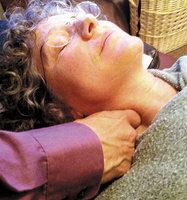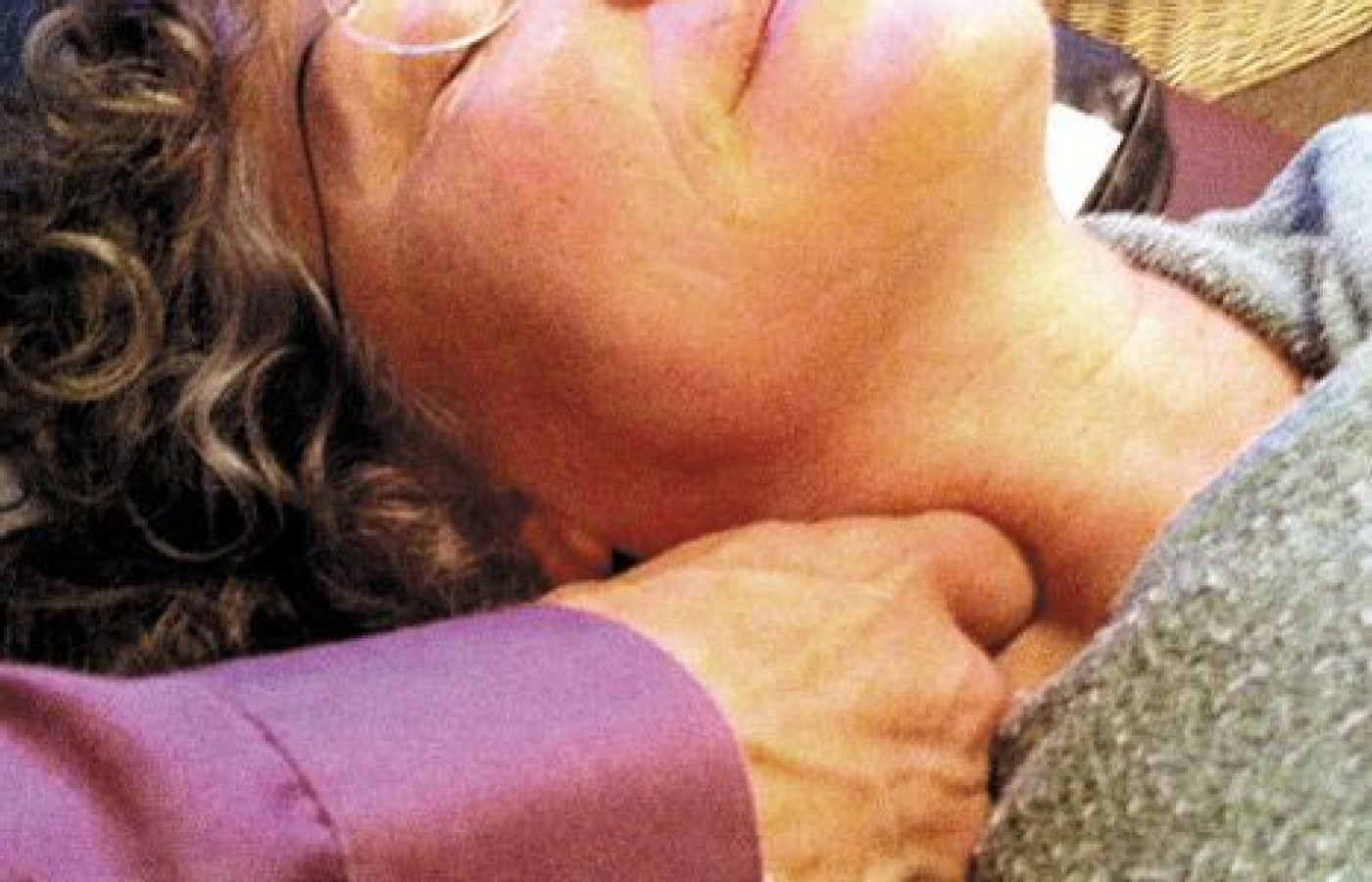In a landmark development, Blue Cross Blue Shield (BCBS) has reached a $2.8 billion settlement to resolve antitrust claims brought by health care providers, including chiropractors. The lawsuit accused BCBS of dividing the nation into exclusive regions and limiting competition, which resulted in lower reimbursements for providers. Although BCBS denies any wrongdoing, the company agreed to the settlement to avoid lengthy litigation – and you can get a piece of the pie.
Fascial Work for Chronic Neck Pain
Let's outline a simple system to assess and clear the neck and surrounding areas of fascial restrictions that are symptomatic. Luigi Stecco has developed a system, which he calls fascial manipulation,1 that uses deep pressure to specific points on the fascial system to release the fascia and treat musculoskeletal pain. I have studied the system and like many of the concepts, but it is a bit too structured for me; a bit too much of a "technique."2 This is my personal tweak of the concept.
I have had a whole series of cases, mostly whiplash-type neck injuries, most of which my partner was the primary doctor on. At some point, 3-12 months after the injury, despite good care, including soft-tissue work, low-force manipulation and rehab, the patients were still not quite well. They had limited range of motion, pain on certain activities and/or ongoing headaches. My partner referred them to me and I tried a different approach.
The Assessment
As usual, start with a standard history and exam, including range of motion of the neck. Stecco has various lines or sectors that he traces throughout the body. Using a similar model, we looked at the neck. On our palpation, we felt for knots in the fascia along a series of lines. We assessed bilaterally the anterior medial neck, the anterolateral neck, the lateral neck, the posterolateral neck, and the posteromedial neck.

Imagine taking the whole cylinder of the neck and assessing the fascia, all the way around the cylinder. This is where words are a bit inadequate. (Check out my video at www.youtube.com/user/marchellerdc: "Cervical Fascia Release," to see a demonstration.) Forget the joints, forget the muscles; just feel the tissues, the fascia, all the way around.
One of the things I like about the neck is how small it is relative to the rest of the spinal cylinder (the thoracics, lumbar and pelvis). Stecco also identifies points above the neck, in the head, and points at the base of the neck, in the cervicothoracic junction area. We do assess the base of the skull, and the hyoid region, and the mandible and temporal regions as well. Below the neck, it is very useful to feel for fascial restrictions along the clavicle, and above and below the clavicle, as well as the upper trapezius and levator scapula zone.
We now have mapped a series of points around the neck, and possibly above and below. Stecco would focus on one of his sectors and its antagonist (such as the front versus the back), and the opposite side. In this variation, I just feel for which points feel most tight. Another option for prioritizing is to ask whether any of the points refer pain into the patient's usual painful area.
Usually, there are between one and four points that stand out for me; the ones that are the most tight and often most tender. (I do not want to treat more than four points in a session, as the patient is likely to feel beat up. This is a pro-inflammatory therapy, so warn the patient that they may be sore for up to two days and to contact you if they are sore for longer than that.) I will note the tight / tender points, such as right anterolateral C5, left lateral C4, right posteromedial C3, etc. Stecco has his own labeling system.
I am describing fascial points in relation to the vertebrae they live next to. I recheck these points first on the next visit and see if they have cleared, and also ask the patient if they are better. Sometimes it is a point; sometimes it is a whole line of points – for example, along the course of the lateral or anterolateral neck on one side. Some of these "points" are smaller than 1 square centimeter; some are larger.
The Treatment
Now, treat the points. I often start with an infrared laser, applying 6 Joules to the point. This often seems to decrease tenderness and begin the softening process. Some patients seem to respond to laser; others don't. It is useful to see who is a responder and use laser only on those patients. Once I have applied 6 Joules of laser, then I do the manual work.
I am again inspired by Stecco on the style of manual work I am doing here. I press deeply into the points and oscillate back and forth, about one fourth of an inch of travel. I do not use a lubricant. I am remaining in contact with one spot on the skin.
Stecco uses either knuckles or elbows. For the neck, knuckles are better; for the bigger knots in the levator or upper trap, elbows may be fine. I will admit that I sometimes "cheat" here. My hands are worn out after 39 years of bodywork. I often use a tool for this deep-pressure work. I use a polished stone tool with two different ends, one larger than the other. It has a great grip and I have developed a feel for it.
Unlike Graston technique tools, I do not get more information through the tool. When I use the stone tool, I need to go back with my fingers or hands and reassess. Use gravity to help you. If the points are on the front of the neck, work with the patient supine. If the points are on the back of the neck, have the patient prone, or have them sit up and bend their head forward to rest it on your table, supported by their arms or some kind of padding.
Stecco describes a clear-cut end point. He looks for at least a 50 percent diminution in the patient's perceived tenderness over the point; for example, from an 8/10 down to a 4/10. He also wants the point to melt completely; to no longer feel that it is there. The end results on palpation – the melting of the points – are considered more important than patient pain reduction.
This takes awhile. The minimum time is at least 60 seconds, and it can take up to four-plus minutes. It is not much fun for either you or the patient. You do have a clear criteria for when you are done: half the tenderness, and the area has to melt away to a normal fascial feel. I often find, after two minutes or so, that the point is mostly melted, with the exception of one or two smaller satellite points on the edges of the original knot.
My studies in fascial manipulation have changed my fascial work in at least two ways. One, I appreciate Stecco's points, his broader look at where the significant points are found. Two, I've found that his protocol to work on the points for a longer time – one to four minutes, or until the knot has completely melted – has a long-lasting and often permanent effect.
I suspect that this criteria, this definition of an end point, is a useful and powerful tool; a way to know whether we are really accomplishing something profound with our soft-tissue work. This same criteria, I suspect, could be used for myofascial release, for Graston or other instrument-assisted soft-tissue therapy, and for trigger-point therapy.
Most of us, when we palpate the neck, are likely looking for one of two problems. The first is joint restrictions; the second is knots in muscles or fascia in the bellies or tendons of specific muscles, such as the SCM, scalenes or upper trapezius. I have deliberately described my scan without using the named muscles or the named joints. I find it very useful, when working with fascia, to remind myself that fascia is an interconnecting tissue, and is found throughout the area of interest. I first learned this from Jean-Pierre Barral's work, and the concept applies in Stecco's work as well. Yes, you want to know your anatomy well, but do not get your brain and hands stuck in your old assessment models.
Take-Home Tips
A few pointers. One, these points are usually very tender. Start with a relatively gentle pressure, one that the patient can tolerate, and gradually increase your pressure. Some chiropractors can be too rough, too sudden. This does not mean you are not going to press deeply; it means start gently and gradually increase your pressure. Do not startle the patient. If you hurt them too much, they will tighten up and you won't get anything done.
Two, when you are treating, what is happening? You need to feel the points releasing. If they do not change at all within 2-3 minutes, I will often switch to another of the points I found and start there instead, and go back to my original point later in the session or next session. Or I may need to mobilize, do Graston, apply the FAKTR principles of soft tissue with movement, stretch the area, or come up with some other strategy.
Three, in an ideal case, the point does not recur. It is not palpable or tender on the next visit. Often, the points are at least smaller, less tender, less dense, but still need some work on the next visit. Points you missed the first time may show up on the subsequent visits. If you are doing this over and over to the exact same points, it is probably not working.
I want to say again that this is not the way fascial manipulation or Stecco would approach this problem; this is my tweak of the Stecco concept. This protocol is not a stand-alone protocol.3 You need to check the joints for restriction, especially the upper cervical spine and the anterior restrictions in the lower cervical joints. Rehab for the upper crossed syndrome muscular patterns is necessary. Look for hypermobility in the lower cervical spine; what I call the "neck hinge." I don't treat any chronic problems without using rehab tools and engaging the patient in their own healing.
So, what were the results in these chronic neck cases? For almost all of these patients, when I applied the methods described above, the patients moved off their plateau. Most of their remaining symptoms completely resolved within 3-6 visits.
References
- Stecco L, Stecco C. Fascial Manipulation: Practical Part. Piccin Nuova Libraria S.p.A., Jan. 14, 2009.
- Heller M. "Fascial Manipulation." Dynamic Chiropractic, July 29, 2011.
- Heller M. "Common Clinical Patterns in the Middle and Lower Cervical Spine." Dynamic Chiropractic, Oct. 21, 2009.



